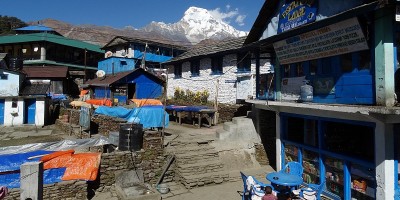The Divine Presence of Chomolungma: A Journey into Sherpa Beliefs and Mountain Majesty

For many, Mount Everest is the ultimate symbol of adventure. It is a place where climbers test their endurance and spirit against nature’s might. But for the Sherpa people who live beneath its towering shadow, Everest is not merely a mountain. It is Chomolungma, the “Mother Goddess of the World,” a sacred being deserving of deep respect, prayer and devotion.
The Sacred Soul of the Himalayas
Long before Everest became a global obsession for climbers, the Sherpa community of Solukhumbu had already woven its presence into their spiritual lives. In their belief, Chomolungma is the home of divine spirits, a living goddess who watches over the land and the people.
Each expedition that approaches the mountain begins not with gear checks but with puja ceremonies, traditional Buddhist rituals where climbers and Sherpas alike seek blessings for safety and success. The fluttering of prayer flags, the rhythmic chanting of monks and the fragrance of juniper smoke fill the air, creating an atmosphere that feels otherworldly.
These moments remind every visitor that in this region mountains are not conquered; they are respected.
Sherpa Faith and the Mountain Goddess
Sherpa spirituality blends ancient Bon traditions with Tibetan Buddhism. Their faith sees mountains, rivers and forests as homes of powerful deities. Chomolungma, the tallest of all, stands as the most sacred.
Locals believe that angering the goddess through disrespectful acts such as unnecessary killing, pollution or arrogance can bring misfortune to climbers. Many elders share stories of how the mountain itself decides who can reach her summit and who must turn back.
This belief adds a mystical layer to the Everest experience, transforming it from a physical challenge into a spiritual pilgrimage.
Where Adventure Meets Reverence
Modern travelers often arrive in the Khumbu region chasing the thrill of standing at the base of the world’s highest peak. Yet what they find is something deeper, an environment where faith and nature coexist in harmony.
As you trek through Tengboche, Pangboche or Dingboche you encounter ancient monasteries, mani walls carved with prayers and monks who still perform blessings for mountaineers. Each turn on the trail is an invitation to slow down and reflect on the bond between humans and the sacred landscape around them.
Chomolungma’s Enduring Majesty
Standing before Everest it is easy to understand why the Sherpas see her as divine. The play of light on her snow-capped slopes, the whisper of the winds that circle her peak and the silence of the high Himalayas all evoke a sense of reverence.
Even for those who do not share the Sherpa faith it is impossible not to feel humbled by the mountain’s presence. Chomolungma commands respect not through her height alone but through the sense of awe she instills in every soul who gazes upon her.
A Deeper Look at Chomolungma’s Sacred Majesty
If you wish to dive deeper into the spiritual and cultural essence of this sacred mountain, Everest Trekkers’ article on The Sacred Majesty of Chomolungma offers a beautiful exploration of her divine aura, her place in Sherpa mythology and how modern travelers can honor her legacy responsibly.
Final Thoughts
In the end, the story of Chomolungma is not just about reaching the top of the world. It is about understanding our place within it. The Sherpas remind us that nature is sacred and every step toward the mountain should be taken with gratitude and humility.







-1745569762.jpg)
-1745569762.jpg)
-1745569769.jpg)
-1745569771.jpg)